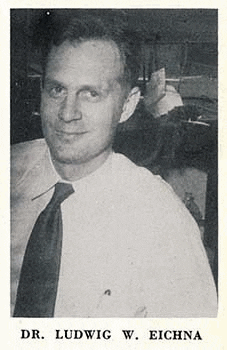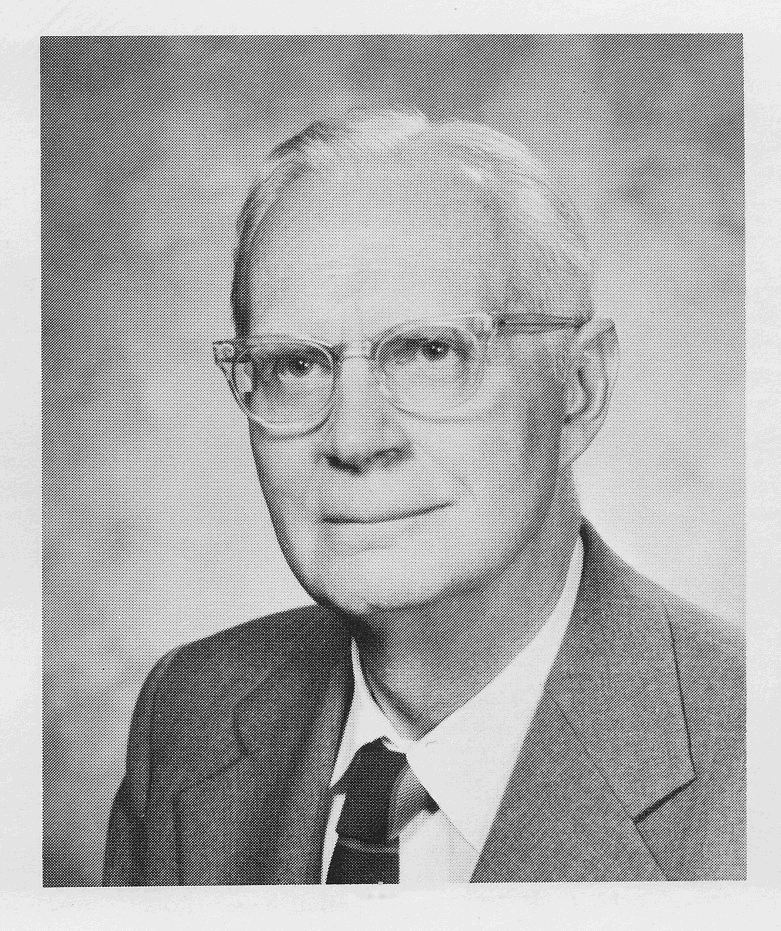Martin Duke
Mystic, Connecticut

While a student in medical school during the early 1950s, I was assigned by chance to the medical service of Dr. Ludwig Eichna at New York City’s Bellevue Hospital (Figure 1). A professor of medicine and a respected cardiologist, clinical investigator, and medical educator, Dr. Eichna was serious, reserved, quiet in demeanor, and when lecturing gave me the appearance of being unapproachable. This latter impression, however, changed once he was on the hospital wards taking care of patients and teaching house staff and students. To this day, I clearly remember making medical rounds with him during my clinical clerkship at the hospital. On one such occasion, he sat on an unoccupied bed in the ward and patiently explained to me how to correctly use a stethoscope when listening to and interpreting heart sounds and murmurs, a part of the physical examination I was having a problem with. Following this private tutorial, he returned with me to the bedside of a patient whose heart we examined together. It was then that I had a “eureka moment” when hearing for the first time the apical diastolic rumbling murmur of mitral stenosis.
On yet another occasion during rounds, Dr. Eichna took me aside to a quiet corner of a ward and carefully drew diagrams demonstrating the changes of pressures and flows that occur in patients with congenital heart problems, using data obtained from a patient upon whom he had recently performed a cardiac catheterization, at that time still a relatively new procedure. I also recollect examining patients with him one winter evening at the Bellevue Thursday Night Cardiac Clinic and watching as he spoke to an elderly Chinese man with Adams-Stokes syndrome whom he been treating for many years. Placing a few dollars in the man’s hand, he quietly said, “Eng, it is cold outside. Take a taxi home tonight.” Such moments as these have been remembered long after much else I saw and learned at medical school has been forgotten.
Having reached a stage in life when reminiscing seems to occur with greater frequency than it once did, I have often found myself thinking about Dr. Eichna and wishing that I could have known him better. Unfortunately, I never saw him again after leaving medical school although I continued to read his publications in medical journals and to follow his career from afar. The latter has been discussed in an excellent biographical account written after his death in 2002 at the age of 94.1
It was fascinating to learn that after retiring in 1974 from the chairmanship of the Department of Medicine at the State University of New York Downstate Medical Center, Eichna made the extraordinary decision to evaluate medical education first hand by becoming at the age of 67 a full time medical student at this school,1,2 taking “everything that regular students went through, including lectures, conferences, seminars, reports, laboratories, patient workups and presentations, operating-room and delivery-room duties, nights and weekends on call, and all examinations, written and oral, including National Board Examinations Part I and Part II.”2 Four years later, on graduating with the class of 1979 (Figure 2) and receiving an MD degree for the second time—the first time was 47 years earlier in 1932—he gave a commencement address to his younger classmates that was later published and entitled “I am a part of all that I have met,”3 a line taken from the poem Ulysses by Alfred Lord Tennyson. In this presentation of “selected segments of a personal fifty-year medical odyssey,”3 Eichna discussed with eloquence and insight his views on medical education and the practice of medicine. His words continue to resonate today:

Bring to our profession our head—that is the science of medicine. Bring to our profession our heart—that is the humanism of medicine. Bring to our profession our hand—that is the work without which head and heart are to no avail.
“To be effective, head, heart, and hand must act as one.”3
For me, perhaps one of the most important and meaningful thoughts expressed by Dr. Eichna about teaching medical students appeared in an article written after he had received his second MD degree:
The profession of medicine demands at all levels, specifically including that of medical students, the highest ethical conduct . . .
Ethics is not really taught by lecture or seminar. These methods have only theoretical impact. Public outcries are not effective. One teaches medical ethics by living it, by expressing it in daily actions. Here starts a habit, good or bad, that will last a lifetime: either a regard for patients as people or the attitude that they are secondary to physicians’ purposes. . . . The patient comes first.2
How fortunate I was to have been at the right place at the right time. The outstanding qualities Dr. Eichna demonstrated as a teacher, physician and sensitive human being while I was a student of his, short as that time was, became lifelong examples for me to follow during my years of practice. I could not have had a better role model to guide me through those years.
References
- Dreizen P. Ludwig W Eichna, MD 1979; 1908-2002 Dedicated teacher, insightful critic; graduated from medical school twice. In: Salwen MJ, ed. Downstate at 150: A Celebration of Achievement. Brooklyn, NY: Alumni Association-College of Medicine, State University of New York, Downstate Medical Center; 2010: 98-102.
- Eichna LW. Medical-school education, 1975-1979: a student’s perspective. N Engl J Med 1980; 303(13): 727-34.
- Eichna LW. “I am a part of all that I have met.” Pharos 1980 Summer; 43(3): 2-6.
MARTIN DUKE, MD, FACP, was a 1954 graduate of the New York University School of Medicine. Following residency training in medicine and pathology and a fellowship in cardiology, he was in private practice in Manchester, Connecticut from 1963–1993. During this period, he served as Director of Medical Education and Chief of Cardiology at the Manchester Memorial Hospital and held a teaching position at the University of Connecticut School of Medicine. He is the author of two books and over a hundred medical articles, edited the collection Reflections on Medicine: Essays by Robert U. Massey, MD, and is on the editorial board of Connecticut Medicine: The Journal of the Connecticut State Medical Society.
Highlighted in Frontispiece Summer 2016 – Volume 8, Issue 3 and Volume 15, Issue 2 – Spring 2023

Leave a Reply